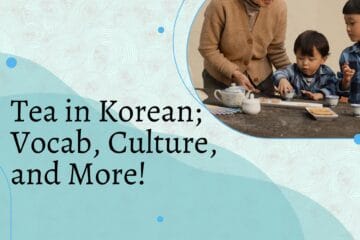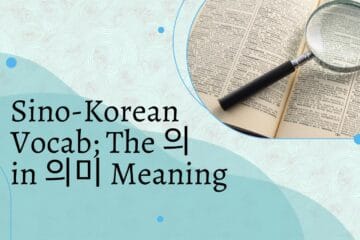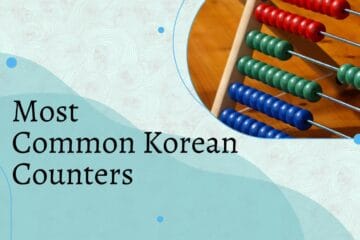What is Sino-Korean?
Sino-Korean basically means that a specific words source is originally Chinese. About 60% of Korean has Chinese origins as a basis. Words like 인간 (person/human) use the Chinese character (or hanja in Korean) 人 make the 인 in 인간.
Is Sino-Korean Important?
Yes and no haha. It’s not vital to know the origins of a word from the Chinese character or recognize the hanja but it can be very useful. It can help create a basis for building your vocabulary. Seeing words with 인 and relating it back to 인간 can help you guess at the meaning. So I wouldn’t force it on anyone to learn Sino-Korean connections but if this is something that can interest you; the history of a language and connection between other words; then it can be a useful tool to building up your vocabulary and understanding of Korean!
Think of it like Latin influence in English; English is an amalgamation or mix of multiple different languages influences and Latin brings in a large chunk of that. Not every English speaker knows Latin but by learning that the ending -cide means to kill/destroy suddenly you can guess that pesticide is killing pests, insecticide is killing insects, etc. If you are a native speaker you might have picked up on that naturally without knowing!
When do you see Hanja?
Don’t stress! Many people only know a few couple actual Chinese characters and you see them very rarely around. The most common areas you’ll find them is in newspapers, signs, restaurant menus, or calendars. But typically, hanja is used as a sort of accent piece; so a restaurant menu wont fully be in hanja but they might us the character for big, medium, and small to show the portions.
But quickly here are some characters you might see!
At a restaurant:
大 (대) Big
中 (중) Middle/Medium
小 (소) Small
Exploring nature and historical sites:
山 (산) Mountain
門 (문) Door
Directions:
入 (입) Enter/Entrance
出 (출) Exit/To Exit
口 (구) Mouth/Opening
東 (동) East
西 (서) West
北 (북) North
南 (남) South
On a calendar:
日 (일) Day
月 (월) Month
年 (년) Year
Relating to people (bathroom signs, etc.):
人 (인) Person
男 (남) Man, Male
女 (여/녀) Woman, Female
Numbers:
一 (일) One
二 (이) Two
三 (삼) Three
四 (사) Four
五 (오) Five
六 (육/륙) Six
七 (칠) Seven
八 (팔) Eight
九 (구) Nine
十 (십) Ten
Elements:
土 (토) Earth
木 (목) Tree
火 (화) Fire
水 (수) Water
Bonus special one!
正 (정) Right/Correct – used for counting in Korean like |||| is used in English



1 Comment
Nessa · March 20, 2023 at 6:51 pm
Thank you for the breakdown on sino korean! its so confusing 😅 I think I’ll leave learning all this hanja and things for later, I still have to get a grip on hangul